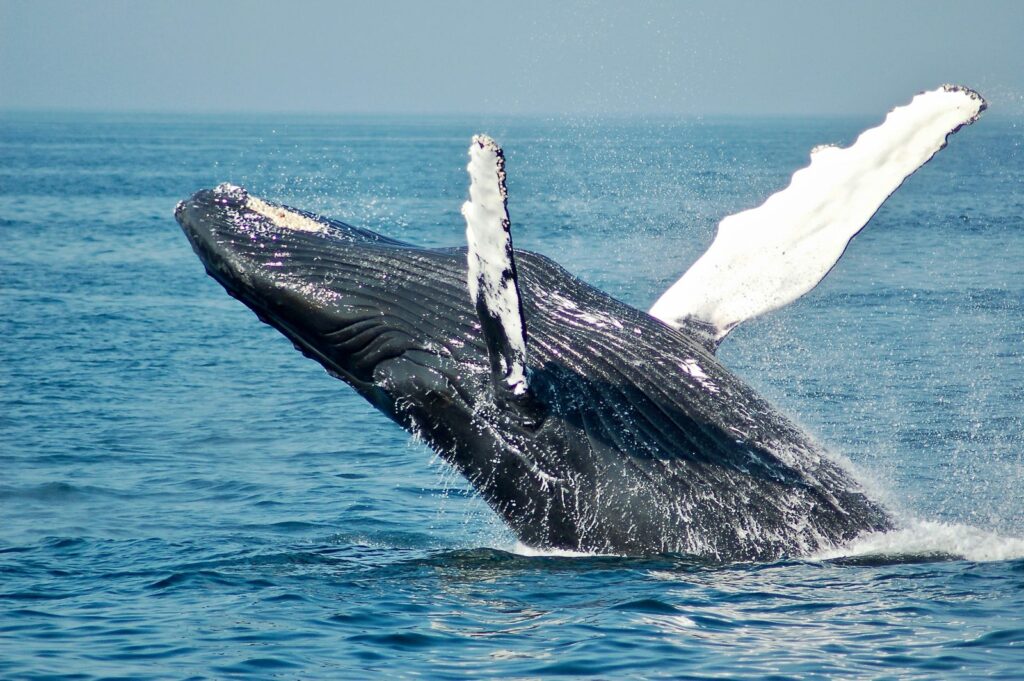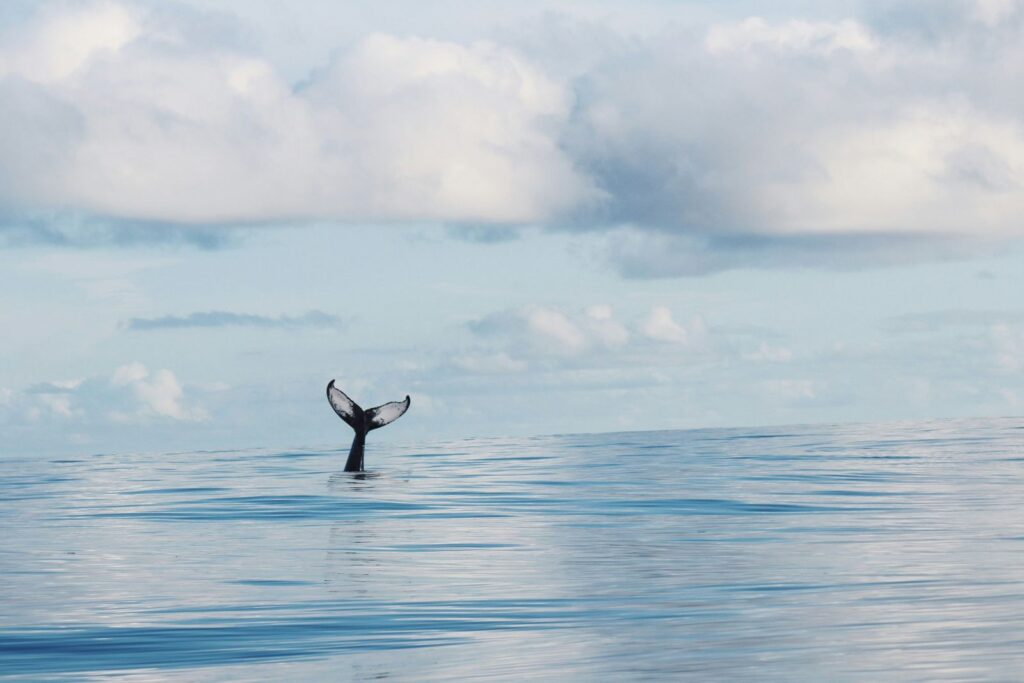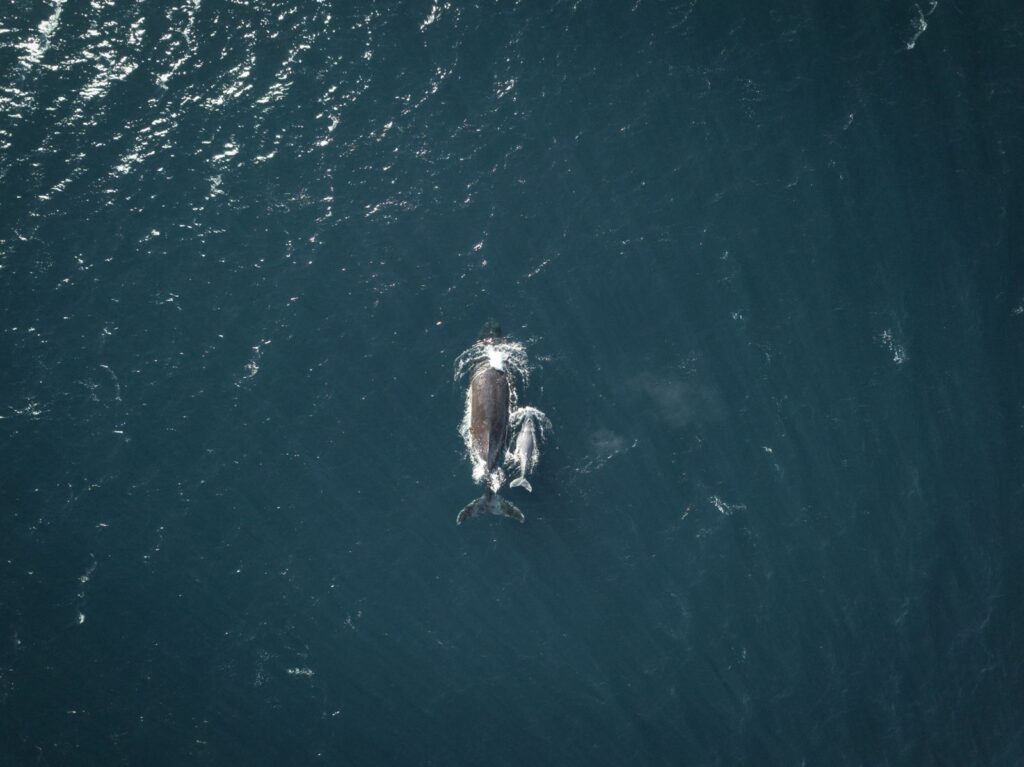At Cooperating Volunteers, we love to talk about some of the majestic ‘creatures’ we can find around the world. We feel deep respect and admiration for the planet and all its inhabitants, and that’s why many of our projects are focused on raising awareness and being part of the positive change the planet needs.
Today we’re talking about one of the largest animals: the humpback whale.

Humpback whales are one of the most charismatic and fascinating species in the ocean. Known for their spectacular breaches and complex songs, these marine creatures impress not only with their size but also with their social and migratory behavior.
They can reach between 12 to 16 meters in length and weigh up to 40 tons — it’s impressive to see them up close. This animal has a lifespan of about 50 years, although they can live longer, and they are found in oceans all over the world, especially in temperate and tropical areas during the breeding season. They are easily recognizable by their long pectoral fins (which can measure up to a third of their body length), knobby heads, and prominent hump, which is noticeable when they arch to dive.
They are migratory mammals, which means they travel thousands of kilometers between feeding areas (in cold waters like the Arctic or Antarctic) and breeding areas (in warm waters).
They feed mainly on krill, small fish, and plankton, using a technique called “bubble net feeding” to gather their prey: they swim in circles releasing bubbles to trap them and then surface with their mouths open.
One of the most amazing characteristics of this species is its ability to produce complex songs. Only males sing, especially during the breeding season, and these songs can last up to 30 minutes and travel long distances and to great depths. Scientists believe the songs serve to attract mates and mark territory. What’s most interesting is that all the whales in a given region sing the same “song,” which evolves over time, as if they were composing music collectively.
Calves are born after a year-long gestation, and measure approximately 4 meters at birth. Mothers are very protective and feed their young with fat-rich milk during the first year of life, caring for them throughout their growth period so they become strong and independent animals. The most common breeding areas are in warm regions such as the South Pacific, the Caribbean, and the Indian Ocean.

Did you know…?
Humpback whales were on the brink of extinction during the 20th century due to commercial whaling. Thanks to international hunting bans and conservation efforts, their populations are recovering, although some specific populations are still threatened. Other dangers include ship strikes, pollution, and underwater noise that interferes with their songs.
SOME INTERESTING FACTS
– They breach out of the water in spectacular acrobatics. It’s not known for sure why, but it’s believed they do it to communicate, remove parasites, or simply play.
– Each humpback has a unique pattern on the underside of its tail (fluke), like a fingerprint. This allows scientists to identify them individually.
– They can migrate up to 8,000 km between feeding and breeding grounds. It’s one of the longest migrations in the animal kingdom.
– Some humpbacks have been seen cooperating to hunt, which is rare among cetaceans.
– They don’t have teeth, but baleen plates that they use to filter small organisms from the water.
WHERE CAN YOU SEE THEM?
If you dream of seeing a humpback whale in the wild, there are incredible places where you can do it:
– Costa Rica and Panama (Season: July–October)
– Dominican Republic – Samaná is famous for this
– Australia – In the southern winter (June to October)
– Norway, Iceland, or Alaska – In the summer months

The humpback whale is not only a giant of the sea, but also a symbol of the majesty and mystery of marine life. Its intelligence, epic migrations, and “songs” have captured the imagination of scientists, travelers, and ocean lovers all over the world. And seeing them live is simply an unforgettable natural spectacle.
A nature that must be respected with responsible practices.




